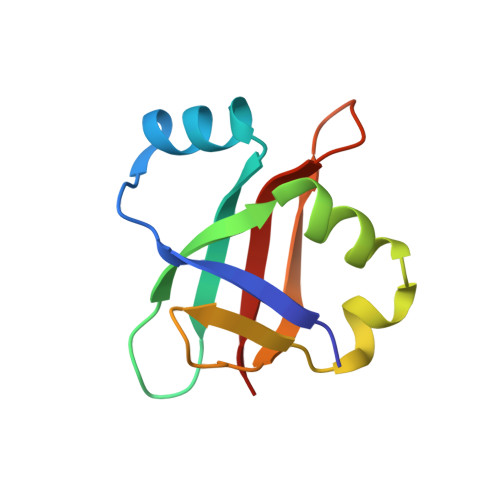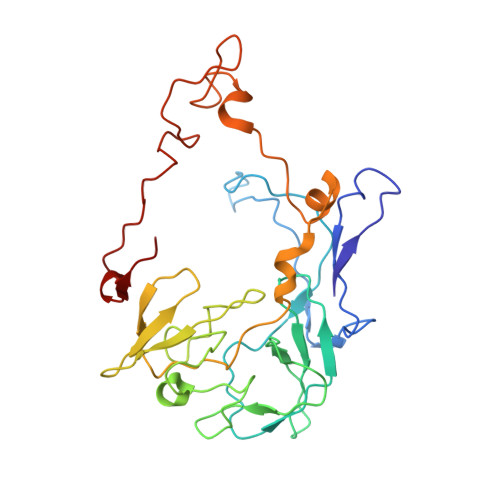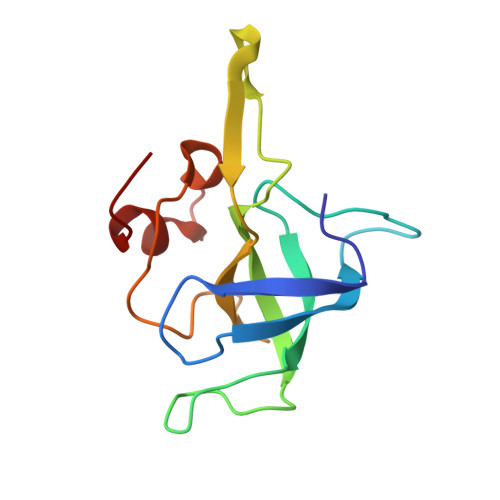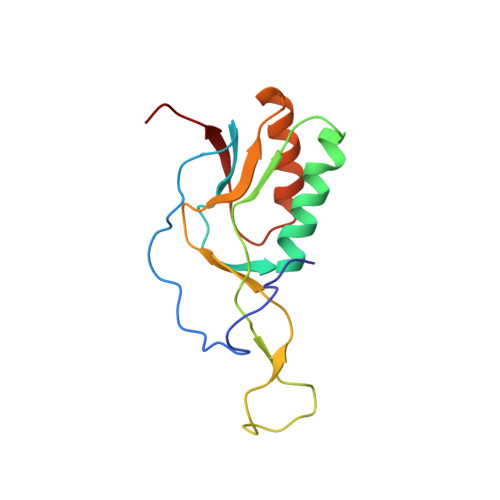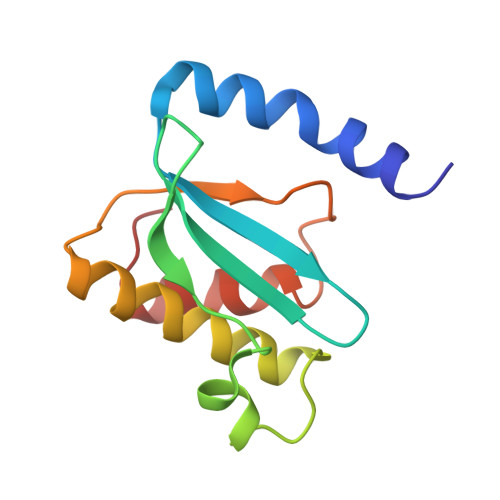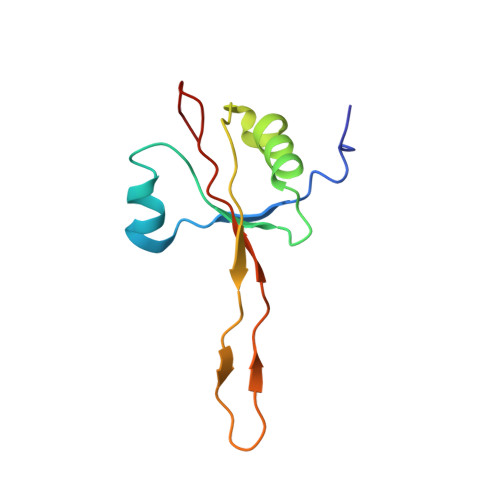Molecular Basis for the Ribosome Functioning as an L-Tryptophan Sensor.
Bischoff, L., Berninghausen, O., Beckmann, R.(2014) Cell Rep 9: 469
- PubMed: 25310980
- DOI: https://doi.org/10.1016/j.celrep.2014.09.011
- Primary Citation of Related Structures:
4UY8 - PubMed Abstract:
Elevated levels of the free amino acid L-tryptophan (L-Trp) trigger expression of the tryptophanase tnaCAB operon in E. coli. Activation depends on tryptophan-dependent ribosomal stalling during translation of the upstream TnaC peptide. Here, we present a cryoelectron microscopy (cryo-EM) reconstruction at 3.8 Å resolution of a ribosome stalled by the TnaC peptide. Unexpectedly, we observe two L-Trp molecules in the ribosomal exit tunnel coordinated within composite hydrophobic pockets formed by the nascent TnaC peptide and the tunnel wall. As a result, the peptidyl transferase center (PTC) adopts a distinct conformation that precludes productive accommodation of release factor 2 (RF2), thereby inducing translational stalling. Collectively, our results demonstrate how the translating ribosome can act as a small molecule sensor for gene regulation.
- Gene Center and Center for integrated Protein Science Munich, Department of Biochemistry, Feodor-Lynen-Strasse 25, University of Munich, 81377 Munich, Germany.
Organizational Affiliation:
















